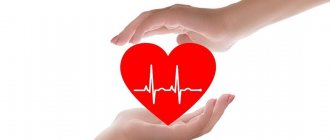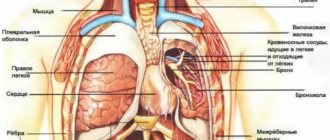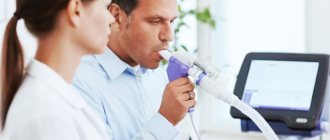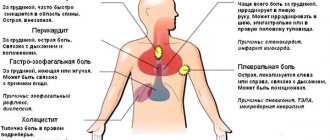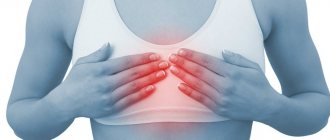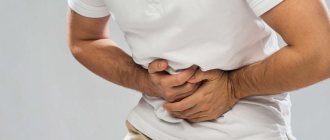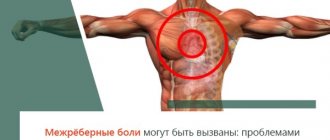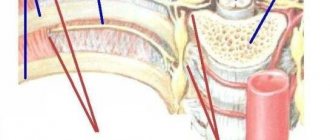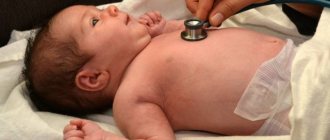If your heart hurts, you should contact a cardiologist. He will conduct a survey to find out what symptoms are bothering you and what they tried to stop them with. Having collected the necessary information, the doctor will refer the patient for a full examination. It is not recommended to refuse it due to unwillingness to pay money, since there is no other way to find out the diagnosis. Based on the results obtained, the specialist will be able to understand why a person has pain in the heart.
Often, heart pain occurs due to such pathological processes:
- heart attack;
- inflammatory diseases;
- problems with heart valves;
- pathological processes not related to the heart muscle.
It is equally important to know what pain in the chest area is. Such information will help narrow down the search and make a diagnosis faster. This list will help you figure out what they are:
- cutting;
- pulling;
- compressive;
- piercing;
- burning.
Whether the heart can hurt constantly, or whether the discomfort will manifest itself in attacks, depends on the cause of the development of the pathology. In some cases, unpleasant sensations do not leave the whole day, and sometimes they appear only under stress, but are acute. The totality of the information obtained will help the doctor create a treatment plan and accurately answer how long a person will continue to have severe chest pain.
Manifestations of a heart attack
Often, every day the heart hurts due to an impending heart attack. This disease is an acute lack of nutrition (ischemia), as a result of which myocardial necrosis (infarction) develops. Usually doctors, answering the question of why the heart hurts due to a heart attack, talk about a gradual blockage of the arteries or a detached blood clot that has blocked one of the main vessels. The development of this process is influenced by atherosclerosis, excessive physical activity, constant stress, etc. Heart pain begins to appear in patients 1-2 months before the attack. However, in some cases, for example, with a broken blood clot, the disease develops at lightning speed.
Signs of heart pain before and during an attack are usually the following:
- Constrictive pain. During an attack, it is difficult to understand where and how the heart hurts, because the pain radiates to the back, upper limb, neck and jaw. They spread mainly to the left half of the body. Heart pain is accompanied by increased sweating, vomiting and constant shortness of breath.
- Heart pain due to stress. The patient may feel discomfort after prolonged physical or mental work. His heart pain goes away only after resting or taking a Nitroglycerin tablet.
- Dyspnea. It often occurs with pain in the heart, indicating an imminent attack. Shortness of breath accompanies the patient almost constantly, for example, while lying down
in bed, during meals and after exertion. Immediately before the attack, the patient’s heart troubles him at night, which is why he constantly suffers from insomnia. - Fast fatiguability. When the heart hurts before a heart attack, the patient gradually begins to feel general weakness. Ordinary actions take more strength from him than before.
- Impotence. If a man's heart hurts due to gradual blockage of the arteries that supply the heart, then he has problems with erection. It can appear 1-2 years before the attack.
- Edema. This sign is the main one for people who want to know how to identify pain in the heart. The most noticeable swelling, indicating disturbances in the functioning of the heart muscle, is in the legs.
- My heart hurts in the morning. Developing myocardial ischemia is often accompanied by this symptom. Sometimes the patient experiences high blood pressure.
- Apnea. The patient's heart may bother him at night, and this manifests itself in the form of short-term stops in breathing.
If you have any doubts, it is better to consult a doctor. He will tell you how to distinguish pain in the heart during an attack from other pathological processes and advise methods to help relieve discomfort.
Organ structure
The heart is one of the main human organs. It nourishes all tissues and cells with oxygen and necessary substances, helping to transport blood throughout the body. It beats about one hundred thousand times per day, and in 60 seconds it pumps from 5 to 30 liters of blood.
Before you find out where an organ is located, you should familiarize yourself with its structure. It looks like a bag of muscles that looks like a flattened cone. The muscular organ has two surfaces - the lower diaphragmatic, the anterior sternocostal, two edges - left and right, as well as an apex and base. Usually its left edge is rounded, and the right edge is sharper . But where are the top and base of the heart?
The movable apex of the heart is formed by the left ventricle. In an adult, it is located in the left fifth intercostal space, in children under one year of age - in the fourth space, 1 cm laterally from the midclavicular line.
The fixed base is a horizontal line that runs along the upper cartilage of the third ribs. To imagine a more accurate location , you should refer to anatomical reference books, which reflect which ribs the boundaries of the heart are located between.
Thanks to palpation, pulsation, tremors, cardiac and apical beats can be determined. Experts determine the right border of the heart by moving their fingers between the ribs of the fourth space.
Inflammatory heart pathologies
The causes of heart pain are quite varied, and sometimes diseases that are characterized by an inflammatory process can cause them. Basically, such pathologies are a consequence of infection, a heart attack, the development of a malignant formation of impaired metabolism, etc. They are characterized by certain types of heart pain and other accompanying symptoms. You can understand this issue in detail by looking at the features of the main diseases:
- Pericarditis. This disease is characterized by inflammation in the area where the heart hurts, namely, in its outer layer. Unpleasant sensations may spread
in the collar area, along the chest and in the arm. It is sometimes difficult to understand where the heart hurts due to increased discomfort when coughing and swallowing. As pericarditis develops, patients' temperature rises, their breathing becomes shallow and their pulse quickens. - Myocarditis. Inflammation of the heart muscle is expressed quite acutely. It manifests itself in the form of unpleasant stabbing and aching sensations on the left side of the chest. Such symptoms can clearly indicate how to distinguish heart pain, so usually no special research is required. Discomfort increases after physical activity. The resulting heart pain is not relieved by Nitroglycerin.
Inflammatory diseases are characterized by constant pain in the heart, which is difficult to relieve and aggravated by stress. Trying to solve the problem yourself in such a situation is a basic mistake that can lead to death. That is why, when the first symptoms appear, it is recommended to consult a doctor to find out why your heart hurts and what to take to alleviate the condition.
Heart valve pathologies
The heart muscle has 4 valves that must open and close. If disturbances occur in this process, then the problem can be determined if you understand where the heart hurts and the nature of the manifestations. Sometimes signs of the disease may not appear for a long time, and then quickly intensify. You can find out how symptoms of heart pain manifest due to valve problems by studying the list below:
- breathing problems due to shortness of breath;
- dizziness;
- constant pain in the heart of a compressive nature during exercise;
- pressing heart pain after inhaling cold air;
- arrhythmia;
- general weakness.
If you do not find out in a timely manner what exactly is hurting, then heart failure gradually develops. It manifests itself with the following symptoms:
- The appearance of extra pounds;
- Edema;
- Bloating.
Due to valve diseases, there are pains in the heart of various types, depending on the cause of the pathology, but mainly, patients feel compression in the chest.
Cardiomyopathy
Cardiomyopathy does not occur due to myocardial malnutrition, tumor or inflammation. This diagnosis is largely collective and belongs to the group of heart diseases of unknown origin. It manifests itself as dystrophic changes in cardiomyocytes (heart cells) and against their background the performance of the cardiac ventricles is often impaired.
Understanding how to identify heart pain in cardiomyopathy is not easy because the disease changes as it progresses. It will not be possible to relieve discomfort by taking Nitroglycerin, and initially the loads do not in any way affect the intensity of the manifestations of the disease.
In the early stages, patients have ambiguous symptoms of heart pain, namely:
- the nature of the pain can be anything;
- unpleasant sensations are transmitted to various places;
- The pain is not severe, but it does not stop.
As cardiomyomaty develops, the heart does not hurt so often, but the disease begins to manifest itself in attacks, especially after physical exertion. The resulting unpleasant sensations are sometimes relieved by Nitroglycerin. At an advanced stage, it is easier to answer what exactly hurts, since the painful focus has already been formed and has a specific localization.
Location anomalies
In typical clinical cases, which are the vast majority, the heart is on the left side. But there are at least two known conditions when this is not the case.
Dextrocardia
It is extremely rare. It is a congenital anomaly. The essence of the deviation (it is not considered a disease in the full sense of the word) is the reverse, mirror arrangement of the heart.
Normally it is on the left, in patients with a similar disorder it is on the right. Further options are possible regarding the localization of other organs.
With isolated dextrocardia, unpaired organs remain in their proper places. Only the heart moves. With systemic, complex transposition is observed. All organs mirror move in the opposite direction.
As a rule, such a deviation does not cause discomfort to the patient. This is normal and physiological in 85-90% of cases. Unfortunately, in the remaining 10-15% of situations, pronounced problems are found.
Usually these are congenital defects of cardiac structures that require surgical care.
In the absence of this, a typical clinical picture of physical and mental retardation in development is revealed.
Possible symptoms include:
As you grow older, signs of physical, mental retardation, or both phenomena are revealed.
Fortunately, irreversible changes occur relatively rarely. It is possible to eliminate organic defects and functional disorders, usually by surgical methods.
Then a course of drug treatment is prescribed using cardioprotectors, antihypertensive and antiarrhythmic drugs in short doses if necessary.
It is not difficult to identify dextrocardia. The position of the heart is left-sided. Even with listening, auscultation, not to mention echocardiography, the fact of transposition becomes obvious.
Next, you need to determine whether there are pathological changes in tissues, cardiac structures, or functional disorders.
In the vast majority of cases, there are no problems with well-being. A person grows and develops within normal limits and does not feel discomfort.
Deviation in such a situation is considered more of a feature than a congenital defect.
Dextroposition
Unlike the previous condition, this almost never occurs in healthy people. The point here is not the transposition of organs.
We are talking about a displacement of cardiac structures relative to the normal anatomical position. Such an anomaly also cannot be congenital, except in extremely rare cases.
The process involves the heart and the organ that caused the displacement.
The causes are mostly pulmonary. Associated with abnormal tissue growth, changes in their volume, deformation of the diaphragm, tumors, and muscle pathologies.
The symptoms are always present and they are quite clear:
The disorder can be diagnosed based on the results of echocardiography using ultrasound techniques. Also, in the most complex and controversial situations, an MRI is prescribed.
If a tumor process is suspected (neoplasia can be hidden, they are not always visible), with contrast enhancement with gadolinium preparations.
The heart is positioned incorrectly, displaced relative to other structures, and deformation of the organ is possible due to compression.
Treatment is surgical in most cases. Its essence is to restore the anatomical integrity of tissues and normalize the position of the heart.
Conservative (medicinal) technique is used as an auxiliary one. Without medications, it will not be possible to correct functional disorders.
Dextroposition poses a great danger to health and life. The problem is not only in the deviation itself, but also in the reason for it.
The following condition also refers to anomalies and behaves in most cases unpredictably, therefore requiring careful monitoring by doctors.
Dextroversion
The essence of the disorder is the inverted arrangement of cardiac structures in the normal position of other organs.
The apex of the heart is located in the opposite direction, the organ is rotated on its own axis in the opposite direction, 180 degrees.
Formally, this is also not a disease. And the so-called minor anomaly. Detected by the results of echocardiography or ECG.
It gives practically no symptoms, as well as any disturbances in well-being. There is usually no danger either.
Arrhythmia
Arrhythmia is an irregularity in the heart rhythm, which sometimes manifests itself as unpleasant sensations in the chest. In this case, the causes of pain in the heart depend on the factor that influenced the development of the pathology. Among them are:
- bad habits;
- endocrine disruptions;
- hypertension;
- diseases of the cardiovascular system;
- excess weight;
- oncological diseases;
- taking medications;
- metabolic disturbances.
It is not recommended to try to eliminate the manifestations of the disease on your own, since pain in the heart due to arrhythmia must be determined by specialists using instrumental examination methods. This is due to the fact that the pain radiates to the left side of the torso, especially to the arm. This phenomenon is characteristic of many diseases. If you independently relieve symptoms with the help of medications, you can hide the development of a serious pathological process.
Sources
- Prives M. G., Lysenkov N. K., Bushkovich V. I. / Human Anatomy. — 12th ed., revised. and additional - St. Petersburg: Publishing house SPbMAPO, 2006. - 720 p., ill.
- Krivoshapova Kristina Evgenievna, Tsygankova Daria Pavlovna, Barbarash Olga Leonidovna Low physical activity as a risk factor for cardiovascular morbidity and mortality // Systemic hypertension. 2021. No. 3.
- Smetneva Natalya Sergeevna, Pogozheva Alla Vladimirovna, Vasiliev Yuri Leonidovich, Dydykin Sergey Sergeevich, Dydykina Irina Stepanovna, Kovalenko Alexey Anatolyevich The role of optimal nutrition in the prevention of cardiovascular diseases // Nutrition Issues. 2020. No. 3.
- Yakushin S.S., Filippov E.V. Physical activity and its importance for the prevention of cardiovascular diseases // Clinician. 2015. No. 3.
Heart disease
Heart defects are predominantly congenital. In most cases, they do not appear at all. However, sometimes the defects cause severe discomfort and can be fatal. You can find out how the symptoms of heart pain manifest themselves in this case from the list below:
- constant pain (stabbing, aching, cutting);
- increased blood pressure;
- swelling of the lower extremities.
The attending physician should tell you what to do if you have pain in the heart due to a defect. Treatment for this problem usually consists of symptomatic therapy and surgery.
Left valve prolapse
Prolapse in the left valve is a severe pathological process characterized by the following symptoms:
- loss of consciousness;
- dizziness;
- rapid pulse;
- feeling of lack of oxygen;
- headache.
You can find out how to determine pain in the heart due to prolapse by its nature. The resulting discomfort has no connection with stress and manifests itself in the form of pressing and aching pain that is not eliminated by Nitroglycerin.
Preparation and carrying out diagnostics
You will only need to prepare if you need to undergo a cardiac X-ray with contrast. It involves taking tests to determine if you have an allergy to contrast, as well as visiting the office on an empty stomach, which will help avoid nausea.
To begin the procedure, you need to remove all jewelry or metal accessories that may affect the quality of the photo. The procedure is performed in 4 different projections:
- front;
- lateral left;
- oblique left (at an angle of 45 degrees);
- right.
Thanks to this, the description and conclusion of the heart x-ray will be as accurate as possible. The doctor will examine all planes of the organ and note the presence of pathological processes.
Aortic diseases
For heart pain, treatment is not always provided on time; for example, aortic dissection is a case where help often comes too late. The severe pain inherent in this pathological process causes loss of consciousness and painful shock. If immediate help is not provided, the person may die.
Patients are often puzzled: how to get rid of pain in the heart, but in fact, unpleasant sensations are a consequence of other diseases. Among them are the following frequently occurring pathological processes:
- Intercostal neuralgia. It is characterized by acute pain, which intensifies with movement, inhalation, coughing, etc. It can last from 5 minutes to 2-3
days. Localized in the right or left half of the chest in the intercostal space. - Osteochondrosis. The focus of pathology is located in the cervical or thoracic region. The patient's hands become numb and pain radiates to the shoulder blade and neck. Discomfort increases when moving.
- Diseases of the nervous system. Neuroses provoke disruptions in the autonomic part of the nervous system. Patients complain of numerous signs of pathologies, including heart problems. ECG and other studies cannot detect them. People with diseases of the nervous system often experience panic attacks due to an unknown cause of their condition. In such a situation, only a psychotherapist can tell you how to get rid of heart pain while at home. Other doctors will only confirm the absence of other diseases.
- Lung pathologies. Pleurisy and pneumonia often manifest as pain that resembles heart pain. It gets worse with coughing and deep breathing.
- A teenager's heart hurts. In young people, chest pain may occur due to carnitine deficiency. It is a substance responsible for the supply of nutrition to cells. A lack of carnitine occurs due to excessively rapid tissue growth during this period. Pain caused by physical inactivity is no less common. The heart needs regular exercise to become stronger. Without them, any overload manifests itself as discomfort in the chest.
In the case of the listed diseases, you can understand how to relieve heart pain after an examination, which is aimed at determining the cause of the discomfort. Nitroglycerin tablets will be ineffective.
Contraindications
Such a study cannot be called completely safe. In this regard, there are a number of situations in which such diagnostics are not performed, but a more gentle method is selected. Often, an ultrasound
or MRI, as well as other studies.
Pregnant women
Before finding out what a heart x-ray is and what this procedure shows, a woman should be absolutely sure that there is no pregnancy. This situation is an absolute contraindication to the procedure, since there is a risk that X-ray radiation will have an adverse effect on the body of both the expectant mother and the baby. It is also not recommended for breastfeeding mothers to undergo diagnostics. However, in some situations, a doctor may prescribe such a procedure if its benefits are significantly higher than the likely risks. Therefore, it is best to trust the doctor.
First aid for heart pain
Medicines for heart pain are prescribed by the attending physician based on the diagnosis. Trying to select medications on your own is prohibited, as you may worsen your condition. But what if the attack comes suddenly? In such a situation, the following instructions will help you understand how to get rid of heart pain:
- First you need to stop running around looking for medicine. Instead, you need to calm down and sit down.
- The room should be well ventilated.
- Breathing should not be limited by clothing, so it is better to unbutton the top buttons.
- If possible, you should lie down. If the pain subsides, then it is quite possible that the problem is not in the heart muscle. With increasing discomfort and a feeling of squeezing, we can talk about an imminent attack.
- To improve the condition, you need to put medicine for heart pain under your tongue - for example, a Nitroglycerin tablet, and then call an ambulance.
After the medical team arrives, it is necessary to list the painful symptoms to the doctors and tell them what actions have been taken since the onset of the attack. All this will help to quickly normalize the condition, since you can relieve pain in the heart only by knowing the whole picture.
Pain in the chest has different manifestations. From them you can roughly understand what is tormenting a person. However, only the attending physician can make an accurate diagnosis, focusing on the symptoms that arise and the results of examinations. Finding on your own what to take for heart pain is life-threatening - there are many diseases that only masquerade as pain in the chest area.
